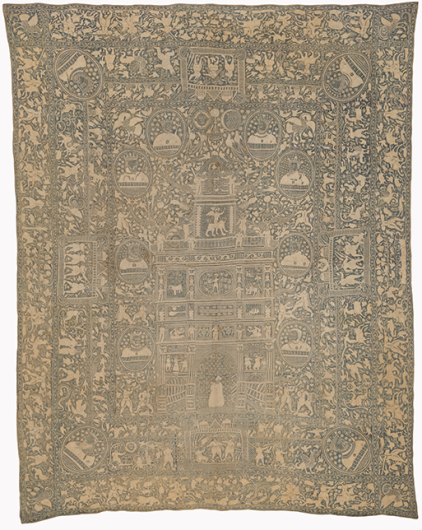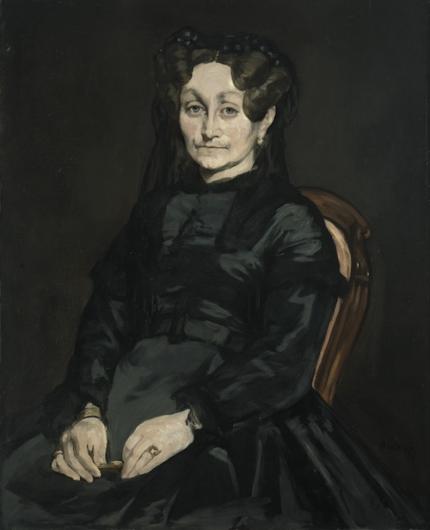
Rape of Europa, Titian
A “must see” during any visit to Boston, the Isabella Stewart Gardner Museum showcases amazing masterworks from all over the world. Founder Isabella Stewart Gardner deliberately designed and arranged the museum to encourage an intimate art experience and even decreed in her will that the collections be permanently exhibited "for the education and enjoyment of the public forever."
This museum is also the site of an infamous and unsolved act of art theft– the largest property heist in history. The caper was even the subject of a popular Netflix documentary. On March 18th, 1990, thieves disguised as police officers immobilized the security guards and stole over $500 million worth of masterworks by Vermeer, Rembrandt, Manet, and Degas. The FBI investigation is still ongoing and there is a $10 million reward for information leading to the return of the art, with empty frames hopefully saving space on the museum walls.
Despite being short a few masterpieces, the Isabella Stewart Gardner Museum is still a fabulous treasure trove. Here are ten must-see works compiled by the museum curators:

Created by Bengali artisans commissioned by the Portuguese who had colonies on the Indian west coast, this mid-17th century Wall Hanging: Triumphal Arch was inspired by arches erected in Lisbon in 1619 to celebrate a royal visit. Embroidered in white silk thread on a blue silk background, the arch is filled with and surrounded by fantastical birds, soldiers in doublets, goddess of strife Discordia, and various royal personages.

Early Renaissance painter Dominican Fra Angelico, known as the “angelic friar” (1400–1455), made his name painting frescoes in Florence. Fra Angelico’s innovative technique and lyrical compositions presaged more modern painting styles.
The Dormition and Assumption of the Virgin is the third panel in a set of four reliquaries–containers for holy relics–depicting the Virgin Mary’s life. This panel details two scenes: the dying Mary, wrapped in a blue cloak, surrounded by Apostles as a priest reads last rites; while above, the beatific Mary has ascended to Heaven, surrounded by an angelic choir.

The painting that began Gardner’s museum collection, the striking Self-Portrait, Age 23 by Dutch Golden Age artist Rembrandt (1606–1669), is one of eighty surviving self-portraits. The artist, wearing a feathered cap, a striped cravat, and a cloak adorned with gold braid, looks directly over his shoulder at the viewer. A prolific artist, Rembrandt produced hundreds of paintings, etchings, and drawings, masterfully capturing texture, personality, and atmosphere.

Gardner considered The Rape of Europa, by Italian Renaissance artist Titian (1488–1576), her crown jewel. Renowned for his remarkable use of color, Titian’s work influenced generations of artists. This mythological scene depicts Jupiter’s abduction of the mortal Europa, disguised as a beautiful white bull. Titian painted Europa clutching the bull’s horn while falling slightly backwards, as the flower-garlanded bull races away from her family on an island beach and cupids cavort in the sky above them.

Italian Renaissance painter Sandro Botticelli (1444 or 1445–1510), best-known for The Birth of Venus and Allegory of Spring, painted many surprisingly complex devotional images. In Virgin and Child with an Angel, Mary, in a red dress and ornate blue cape, sits against a white painted doorway that mysteriously frames the landscape behind her. A chubby baby in her lap, Mary serenely selects a stalk of wheat from a bowl an angel holds up to her, creating a visual allusion to the bread and wine of the Eucharist.

Obsessed with John Singer Sargent’s (1856–1925) scandalously sensual portrait, Lady X, Gardener maneuvered an introduction through shared friend, novelist Henry James, and commissioned this 1888 portrait. This began a lifelong collaborative friendship.
The magnificently provocative Isabella Stewart Gardner caused such a stir that Gardner’s husband requested it not be shown publicly. The piece could only be viewed by appointment or glimpsed through a stairwell, until Gardner’s death. Standing in a black evening dress, bare arms clasped before her, bejeweled pearl strands glimmering at her neck and waist, Gardner is haloed by a red floral brocade resembling a mandala, evoking both Catholic and Buddhist iconography.

A pivotal figure in the transition from realism to impressionism, Édouard Manet (1832–1883) was one of the first French modernists. This portrait of his mother in mourning, Madame Auguste Manet, resonates sorrowful, stern compassion. A pale figure seated in a dark room, dress and veil merging with the background, Manet’s mother is almost a monochromatic study, with her blue-green tone and the faintly visible red edge of her upholstered chair the only notes of color.

The Spanish Cloister, one of three new galleries Gardner added to the first floor in 1914, with its alcove framed by a Moorish arch, was designed specifically to display another Sargent painting, El Jaleo. Named for an Andalusian dance, the massive, highly kinetic painting practically vibrates with music and dancing. A Spanish woman poses dramatically, heels clicking, as musicians with shadowed faces play guitars in the background.

Considered the most important non-Western artwork in Gardener’s collections, this Chinese Votive Stele, crafted during the Eastern Wei Dynasty in 543 CE, is essentially a prayer for universal and personal salvation, compassion, and wisdom. The central figure of the Buddha, hand raised in benediction, is flanked by disciples and bodhisattvas all standing on lotus petals.

Created by Bengali artisans commissioned by the Portuguese who had colonies on the Indian west coast, this mid-17th century Wall Hanging: Triumphal Arch was inspired by arches erected in Lisbon in 1619 to celebrate a royal visit. Embroidered in white silk thread on a blue silk background, the arch is filled with and surrounded by fantastical birds, soldiers in doublets, goddess of strife Discordia, and various royal personages.

Early Renaissance painter Dominican Fra Angelico, known as the “angelic friar” (1400–1455), made his name painting frescoes in Florence. Fra Angelico’s innovative technique and lyrical compositions presaged more modern painting styles.
The Dormition and Assumption of the Virgin is the third panel in a set of four reliquaries–containers for holy relics–depicting the Virgin Mary’s life. This panel details two scenes: the dying Mary, wrapped in a blue cloak, surrounded by Apostles as a priest reads last rites; while above, the beatific Mary has ascended to Heaven, surrounded by an angelic choir.
Megan D Robinson
Megan D Robinson writes for Art & Object and the Iowa Source.
























